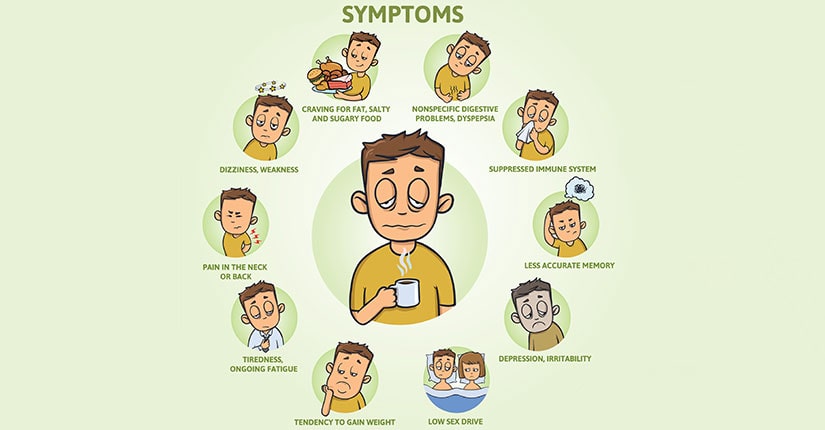What’s the difference: Food allergies, sensitivities and intolerance?
By Nmami Agarwal 14-May 2023 Reading Time: 9 Mins

Have you heard people complaining about infection in their gut or change in the skin texture such as eczema or headaches/migraines?
Wondering what it may be?
Do check out this blog which will help you understand the key differences between the above-mentioned symptoms.
What is a food allergy?
A food allergy occurs when the body has a specific and reproducible immune response to certain foods. The body’s immune response can be severe and life-threatening, such as anaphylaxis. Although the immune system normally protects people from germs, in people with food allergies, the immune system mistakenly responds to food as if it were harmful.
Food allergy symptoms usually develop within a few minutes to 2 hours after eating the offending food. Rarely, symptoms may be delayed for several hours.
The most common food allergy signs and symptoms include:
- Tingling or itching in the mouth
- Hives, itching or eczema
- Swelling of the lips, face, tongue and throat or other parts of the body
- Wheezing, nasal congestion or trouble breathing
- Abdominal pain, diarrhoea, nausea or vomiting
- Dizziness, lightheadedness or fainting
- Anaphylaxis: It is a potentially life-threatening reaction that can impair breathing and send the body into shock; reactions may simultaneously affect different parts of the body (for example, a stomach ache accompanied by a rash)
Management and Treatment: The primary way to manage a food allergy is to avoid consuming the food that causes problems.
- Carefully check ingredient labels of food products, and learn whether what you need to avoid is known by other names.
- The Food Allergy Labelling and Consumer Protection Act of 2004 (FALCPA) mandates that manufacturers of packaged foods produced in the United States identify, in simple, clear language, the presence of any of the eight most common food allergens – milk, egg, wheat, soy, peanut, tree nut, fish and crustacean shellfish – in their products. The presence of the allergen must be stated even if it is only an incidental ingredient, as in an additive or flavouring
- Some goods also may be labelled with precautionary statements, such as “may contain,” “might contain,” “made on shared equipment,” “made in a shared facility” or some other indication of potential allergen contamination. There are no laws or regulations requiring those advisory warnings and no standards that define what they mean. If you have questions about what foods are safe for you to eat, talk with your allergist.
- Avoiding an allergen is easier said than done. While labelling has helped make this process a bit easier, some foods are so common that avoiding them is daunting. A dietitian or a nutritionist may be able to help. These food experts will offer tips for avoiding the foods that trigger your allergies.
- With certain foods from your diet, you still will be getting all the nutrients you need. Special cookbooks and support groups, either in person or online, for patients with specific allergies can also provide useful information.
- Many people with food allergies wonder whether their condition is permanent. There is no definitive answer. Allergies to milk, eggs, wheat and soy may disappear over time, while allergies to peanuts, tree nuts, fish and shellfish tend to be lifelong.
-
Eating out
Be extra careful when eating in restaurants. Waiters (and sometimes the kitchen staff) may not always know the ingredients of every dish on the menu. Consider using a “chef card” – available through many websites – that identifies your allergy and what you cannot eat. Always tell your servers about your allergies and ask to speak to the chef, if possible. Stress the need for preparation surfaces, pans, pots and utensils that haven’t been contaminated by your allergen, and clarify with the restaurant staff what dishes on the menu are safe for you.
What is food intolerance?
Unlike an allergic reaction, the symptoms of food intolerance are typically gastrointestinal. Intolerance means that your body does not have the correct mechanisms to digest certain foods properly.
A common food intolerance is lactose — the main sugar in milk products. If you have lactose intolerance, your body has difficulty digesting lactose, causing symptoms of bloating, abdominal pain and sometimes diarrhoea.
Other intolerances that are sometimes confused with food allergies include:
- Irritable bowel syndrome — a condition causing frequent diarrhoea, constipation, bloating and other gastrointestinal symptoms when excess short-chain carbohydrates are consumed
- Celiac disease — a condition where the body sustains damage at a microscopic level from ingesting gluten, which is found in wheat, barley or rye products
- Food poisoning is caused by bacteria that contaminate food
Management:
- You may need to change your diet to limit or eliminate problem foods. Many people with food intolerances find that consuming small amounts of food causes few symptoms if any. When symptoms occur, over-the-counter medicines like antacids or antidiarrheals can help.
- People who are lactose intolerant can consume lactose-free milk and dairy products. You can also buy lactase enzymes at drugstores. You can take lactase pills before consuming dairy products or add lactase drops directly to milk to break down the lactose.
A food intolerance can cause stomach upset and other digestive problems after you consume certain foods or drinks.
Having a food intolerance isn’t the same as having a food allergy. Food allergies cause an immune system response that can be life-threatening. Most people with food intolerances can have small amounts of those foods without distressing symptoms. A food diary and elimination diet can help determine your food intolerance.




















